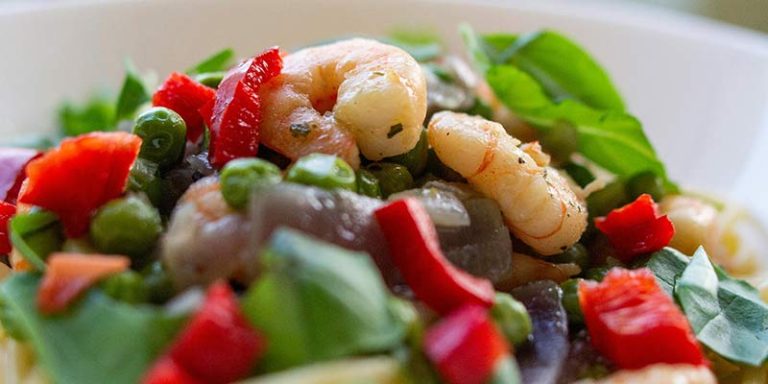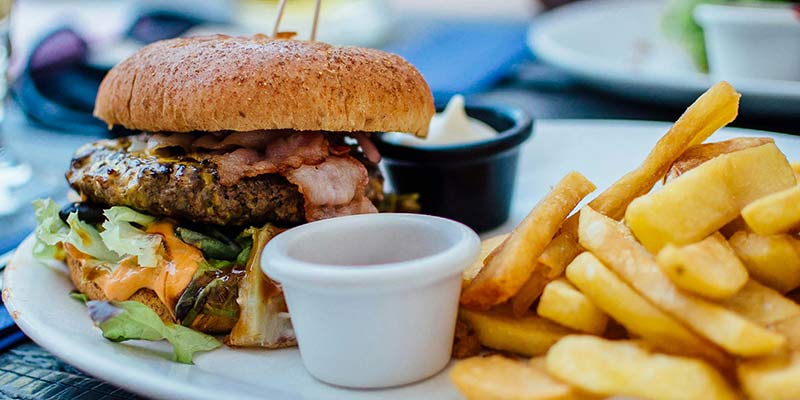Wondering which low fiber foods before a colonoscopy are safe to eat? In this article, Dr Akintomiwa explains what a low fiber diet is, what foods you can eat and which foods to avoid.
Colonoscopy, as we know it today, is a medical procedure developed in 1969 by Drs. William Wolff and Hiromi Shinya at New York’s Beth Israel Medical Center. It involves using a long, flexible camera known as a colonoscope to visualize and examine the large intestine (and rectum). A colonoscopy may be done for numerous reasons. These reasons may be diagnostic or therapeutic. Some indications for a colonoscopy include:
- Hematochezia: This is the presence of blood in stool and may indicate bleeding in the lower gastrointestinal tract. A colonoscopy helps to confirm that and identify the location of the bleeder.
- Screening for colorectal cancer: According to the American Cancer Society Guideline for Colorectal Cancer Screening, people with an average risk for colorectal cancer are encouraged to start routine screening by the age of 45 years. People with increased risk are advised to start earlier.
- Surveillance after a polypectomy: A 3-year follow-up colonoscopy is recommended in patients with polyps greater than or equal to 1cm.
- Surveillance after a colon resection: The rationale behind post-resection surveillance in the management of colorectal cancer is the potential for early identification of a potentially treatable recurrence.
- Foreign body removal: Foreign bodies stuck in the colorectal tract can be located and retrieved with a colonoscopy.
- Colonic decompression: Colonic decompression, the therapeutic management of acute colic Obstruction, is done with a colonoscopy.
Regardless of the indication for a colonoscopy, the preparation for a colonoscopy session is essentially the same. Pharmacological, mechanical, and dietary methods are employed with the aim of cleansing the bowels as thoroughly as possible.
One of the dietary measures required in preparing for colonoscopy is a Low-Fiber Diet.

WHAT IS A LOW-FIBER DIET?
A low fiber diet typically begins about three days before a colonoscopy. It involves strictly consuming low-fiber foods and drinks until the day before the colonoscopy, when a clear liquid diet typically begins.
Low-fiber foods, as the name implies, contain low amounts of fiber. Therefore, they leave behind a low residue – that is, undigested food – in the gut after digestion.
When to Eat Low Fiber Foods Before a Colonoscopy
| Diet | Time during Colonoscopy Preparation |
|---|---|
| Low Fiber Diet | 3 days before Colonoscopy 2 days before Colonoscopy |
| Clear Liquid Diet | 1 day before Colonoscopy (Day Before) Learn more about the Clear Liquid Diet here |
WHY SHOULD YOU EAT LOW FIBER FOODS BEFORE A COLONOSCOPY?
The primary purpose of eating low fiber foods before a colonoscopy (the low fiber diet) is to have a clear bowel, which is critical to the effectiveness and accuracy of the procedure. When the colon is free of solid feces, the examiner is able to visualize the lining of the colon clearly. This visibility aids a complete inspection and detection of any abnormalities, such as polyps or inflammation. To obtain optimal results, minimize fiber intake in the days leading up to the colonoscopy.
WHAT CAN YOU EAT ON A LOW FIBER DIET?
EXAMPLES OF LOW FIBER FOODS BEFORE A COLONOSCOPY
Some examples of safe low fiber foods before a colonoscopy, that you can enjoy include:
WHITE BREAD
White bread has far less fiber than whole-grain bread. It is a low-fat source of protein, which is required for tissue repair and growth. It is also a source of vitamins, including vitamin B1 and vitamin B3, which are useful in converting carbohydrates to glucose and preserving healthy skin.
White bread can also contain folic acid (vitamin B9), a vital preconception and prenatal care nutrient for preventing neural tube defects. Lastly, although not in large amounts, bread provides some calories of energy for day-to-day activities.
WHITE RICE
White rice is a refined grain with less fiber than whole-grain rice. According to the United States Department of Agriculture (USDA), 100g of cooked white rice contains 68.5g of water, supplies 130 kcal of energy, and provides Magnesium, Phosphorus, and Potassium, among a number of other minerals and vitamins. An additional advantage is that plain white rice is typically gluten-free.
PASTA AND NOODLES
Pasta is a low-fiber food made from grain. It is filling, which means that it suppresses appetite for a long time. The essential ingredients are simple and inexpensive: flour, water, salt, and sometimes some eggs.
Whether homemade or store-bought, pasta is an excellent choice of food to maintain a low-fiber diet while staying within budget. It is also an extremely versatile staple cuisine. To top it off, it is relatively easy to cook.
Noodles are a poor source of fiber and a handful of other nutrients. However, many instant noodle brands fortify their products with nutrients such as iron, manganese, and vitamin B.

LEAN MEAT
Lean meat is meat with low-fat content. Examples include skinless chicken and turkey, eggs, fresh dishes, pork tenderloin and pork chops. Lean meats are excellent sources of protein, minerals, and vitamins while having a low fiber content.
VEGETABLES
Examples of low-fiber vegetables you can enjoy include lettuce, cucumbers without their seeds or skin, and zucchini. These vegetables can be snacked on raw on this diet.
Some other vegetables that can be cooked alone or with other foods on a low-fiber diet include Spinach, Eggplant, Asparagus, Beets, Carrots, Green beans, and Wax beans. Potatoes may also be eaten but without their skin. Seeds and skins of vegetables should not be eaten.
FRUITS
There are quite a variety of fruits that can be enjoyed while on a low-fiber diet. One of the best options to consider is Banana. Bananas are low-fiber fruits, easily digestible and nutritious (rich in Potassium and Vitamin C). Cantaloupes are good for hydration, are low-fiber, and are rich in vitamins A and C.
Fruits like apples and pears need to be peeled and cooked before consumption because they have high fiber content in their raw form. They are still nutritious after peeling and cooking. Watermelon also has to be peeled and deseeded before consumption. Apricots need to be peeled and pitted in order to lose some of their fiber content. Kiwis and mangoes are delicious and nutritious but must also be peeled before eating to maintain a low-fiber diet.
DESSERTS
Desserts such as cakes and cookies made from refined ingredients are also suitable low fiber foods before a colonoscopy; they are easily digestible can still be enjoyed on a low-fiber diet. Ice cream, yogurt, and hard candy can also be eaten. However, deserts with nuts or seeds should be avoided while on a low-fiber diet.
FOODS TO AVOID ON A LOW FIBER DIET
When on a low-fiber diet, foods with a high fiber content should be off-limits. High-fiber foods are not as easily digestible as low-fiber foods, and they leave a lot of residue in the colon after digestion.
Some examples of high-fiber foods to avoid while on a low-fiber diet include:
- Nuts
- Seeds of fruits (e.g., mango, grapes, and watermelon)
- Skins of many fruits, including but not limited to apples, apricots, mangoes, kiwis, and pears, are high in fiber and
- Raw vegetables
- Whole grain foods
CAN YOU EAT AGAR AGAR ON A CLEAR LIQUID DIET OR LOW FIBER DIET?
Agar agar, or just agar, is a gel-like substance that is derived from red algae. It is a popular substitute for gelatin because it is plant-based, flavorless, and compatible with a variety of diets. It does, however, contain a lot of fiber (about 80%) and has little calories. It bulks up the stool, which goes against the objective of a low-fiber diet.
PRECAUTIONARY MEASURES TO TAKE WHEN ON A LOW-FIBER DIET
While a low-fiber diet is beneficial in the preparation for a colonoscopy, it is important to acknowledge that it is a deviation from most people’s routine diet. Hence, it is crucial to take some precautionary measures that will help you successfully adapt to this diet. Some of these measures are:
- DISCUSS WITH YOUR MEDICAL TEAM: It is vital to discuss any concerns or pre-existing health issues with your medical team before you begin a low-fiber diet. This is in order to help customize your diet to suit your medical needs and prevent any adverse reactions to the foods. It is also crucial to talk about any medications you may currently be on and how they may interact with your low-fiber diet.
- HYDRATE: One of the side effects of bowel preparation for colonoscopy is the passage of loose stools. This induced diarrhea can cause dehydration. Therefore, the importance of hydration on a low-fiber diet cannot be overemphasized.
- POST-COLONOSCOPY DIET: After days of abstaining from high-fiber foods, it is reasonable to be cautious in reintroducing them back into your diet after colonoscopy. High-fiber foods should be gradually reintroduced into your diet to avoid gastrointestinal discomfort from a sudden change in diet.
CONCLUSION
Low-fiber diets are necessary for colonoscopy preparation. Eating low fiber foods before a colonoscopy facilitates effective colon cleansing and ensure good visualization during the procedure. Following the recommended diet and eating only the approved low-fiber foods assist in maximizing the success and accuracy of the colonoscopy while avoiding unnecessary procedural discomfort. It is advisable to have your nutritionist structure a meal plan that puts any pre-existing medical conditions you may have into consideration.



